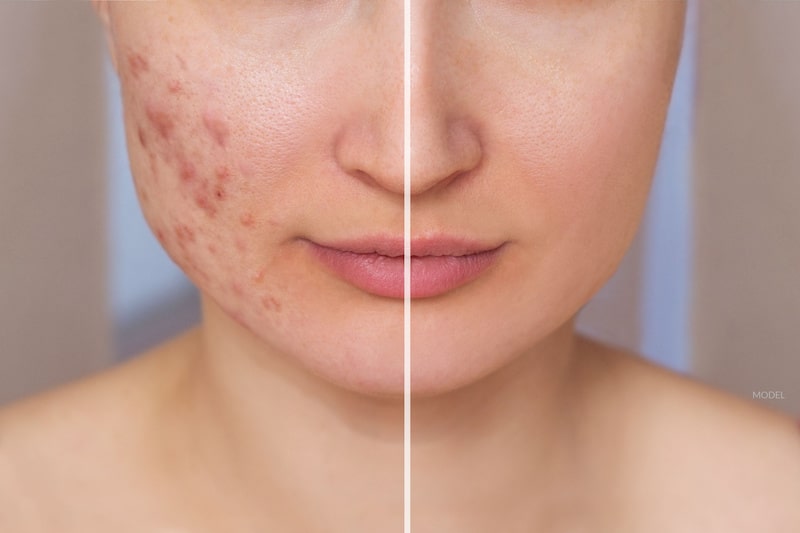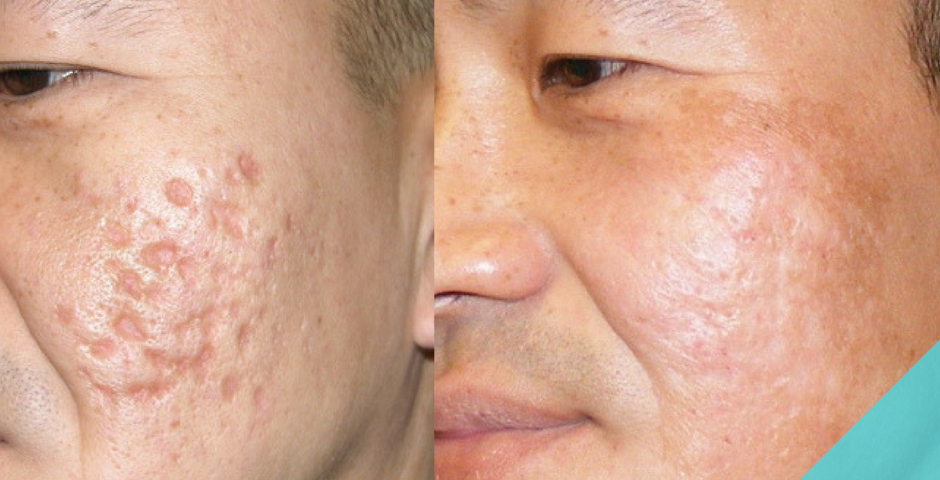Ingenious Acne and Acne Scars Treatment: Solutions for Every Skin Kind
Exploring Skin Conditions: Recognizing and Dealing With Acne Scars for Healthier Skin
Acne marks represent a significant problem for people seeking to maintain healthy and balanced skin, as they can impact both appearance and self-worth. Comprehending the various types of marks, from atrophic to hypertrophic, is essential for identifying appropriate treatment alternatives. While expert interventions like chemical peels and microneedling can be reliable, the significance of personalized treatment plans can not be overemphasized. Furthermore, preventative measures play a critical function in minimizing future scarring. As we explore these aspects, one must think about how the ideal approach can cause transformative outcomes.
Understanding Acne Scars
Comprehending acne marks is essential for any person that has experienced serious acne, as these marks can have a lasting effect on both physical look and emotional well-being. When the skin undertakes inflammatory responses during active acne lesions, acne scars develop. The extent of scarring is usually influenced by factors such as the type of acne, its duration, and private skin attributes.
The body's all-natural recovery procedure can cause either atrophic marks, which look like clinical depressions in the skin, or hypertrophic marks, which are elevated and arise from overflow of collagen. In addition, the emotional toll of acne marks need to not be underestimated; many individuals report feelings of embarrassment, anxiety, and lowered self-esteem. This emotional burden can affect social interactions and overall lifestyle.
Addressing acne scars requires a comprehensive understanding of their formation and impact. Awareness of the possibility for long-term consequences connected with neglected scars can motivate people to look for proper treatments. Early intervention and effective administration techniques can considerably improve skin look and improve psychological resilience, stressing the significance of understanding the intricacies surrounding acne scars.
Kinds Of Acne Scars
Acne scars can be categorized right into distinct kinds, each displaying distinct characteristics and calling for particular treatment techniques. The main sorts of acne scars consist of atrophic, hypertrophic, and keloid scars.

Hypertrophic marks, on the other hand, are raised above the skin level and are the outcome of too much collagen manufacturing during the healing procedure. They typically remain within the boundaries of the original acne lesion. Keloid marks are comparable however expand beyond the initial injury site, creating bigger, increased areas that can be scratchy or painful.
Comprehending these kinds of scars is crucial for picking appropriate therapy alternatives. Various marks might react much better to certain treatments, such as laser therapies, fillers, or surgical interventions, highlighting the significance of a tailored method to acne scar management.
Identifying Your Marks
Acne scars usually drop into 2 classifications: atrophic and hypertrophic marks. These can even more be categorized right into ice-pick scars, boxcar marks, and rolling scars, each exhibiting unique qualities and requiring various approaches for analysis - acne scars treatment.
Hypertrophic scars, on the various other hand, are increased and occur as a result of extreme collagen production throughout the healing procedure. Acknowledging the specific attributes of your scars-- such as size, depth, and texture-- is crucial for correct recognition. In addition, think about the distribution of scars throughout your skin, as this can indicate the intensity and period of the acne condition.
Engaging with a skin doctor can provide important understandings right into the nature of your scars, helping in the distinction in between different kinds. An extensive understanding of your marks will inevitably lead to a much more tailored and reliable therapy strategy, ensuring a clearer and healthier skin tone.
Therapy Alternatives Readily Available
Identifying the particular kind of acne marks existing on your skin prepares for discovering reliable treatment options. Usual types of acne marks include atrophic (depressed), hypertrophic (elevated), and post-inflammatory erythema.
For atrophic scars, choices such as chemical peels, microneedling, and laser resurfacing are widely utilized. Chemical peels off utilize acids to eliminate the outer layer of skin, promoting new cell growth. Microneedling includes small needles that produce micro-injuries, promoting collagen manufacturing. Laser resurfacing targets harmed skin cells, boosting structure and tone. find
Hypertrophic scars can be treated with corticosteroid injections to squash the mark or laser treatment to minimize inflammation and enhance appearance. acne and acne scars treatment. Silicone gel sheets and pressure dressings might additionally help in handling raised marks
Furthermore, dermal fillers can temporarily complete clinical depressions from atrophic marks, while surgical excision may be appropriate for extreme situations. Each treatment option has its factors to consider and advantages, making it important to seek check over here advice from a skin specialist. They can provide personalized referrals based on the type and severity of your scars, along with your skin type and general health and wellness.
Tips for Avoidance
Reliable prevention methods can significantly minimize the likelihood of creating acne marks. Using non-comedogenic items aids avoid clogged up pores, which can exacerbate acne.
Preventing the impulse to pick or stand out acne sores is crucial, as this can result in much deeper skin damages and increase the risk of scarring. Instead, think about making use of a cold compress or over the counter therapies to reduce swelling and redness.
Sunlight defense is another crucial facet of avoidance; ultraviolet (UV) rays can dim scars and impede the recovery procedure. Using a broad-spectrum sun block with a minimum of SPF 30 daily can shield the skin and advertise also recovery.
Lastly, keeping a balanced diet regimen abundant in vitamins, anti-oxidants, and minerals supports skin health and wellness and recovery. Staying moisturized and taking care of tension over here degrees can also play a considerable duty in decreasing acne flare-ups. By applying these techniques, people can significantly minimize their opportunities of developing acne scars.

Final Thought
In final thought, understanding and identifying acne marks is necessary for reliable treatment and achieving healthier skin. Different types of acne scars, including hypertrophic and atrophic marks, require details interventions tailored to individual demands.
The body's natural recovery process can result in either atrophic marks, which show up as anxieties in the skin, or hypertrophic scars, which are increased and result from overflow of collagen. They are further split right into 3 subtypes: ice pick scars, boxcar marks, and rolling marks. Acne marks generally drop right into two categories: atrophic and hypertrophic scars. These can better be categorized right into ice-pick marks, boxcar marks, and rolling marks, each exhibiting distinct qualities and needing different techniques for evaluation.
Various types of acne scars, including hypertrophic and atrophic scars, necessitate particular interventions tailored to specific demands.